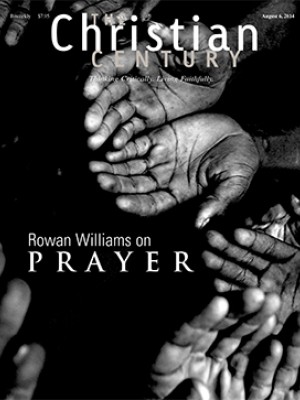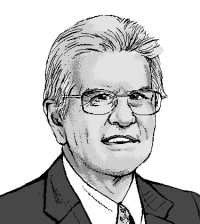Imagining Cuba’s future

Cuba is nothing like as central to U.S. policy as it once was, but that may change when the current regime either implodes or accelerates its tentative steps toward liberalization.
At present, Cuba survives only on massive handouts from Venezuela, which could be curtailed overnight. If and when Cuba leaves its bubble, it will undergo a rapid social and political transformation. What intrigues me is the question of how the nation’s religious landscape will change and how much we can learn about that from the experience of comparable societies.
When Fidel Castro began his rule, he declared Cuba an atheist state. Religious persecution has been commonplace ever since, though never as bloodthirsty as in, say, North Korea, and the degree of official intolerance has fluctuated over time. Pope John Paul II’s visit in 1998 significantly improved official relations with the Roman Catholic Church.
Read our latest issue or browse back issues.
Unregistered groups, however, continue to suffer. The best statistics we have—and estimates vary widely—suggest that half of Cubans identify as Catholic, 40 percent are nonreligious or unaffiliated, and non-Catholic Christians make up 7 percent. Complicating the statistics is the issue of dual affiliation: at least 17 percent adhere to Afro-Cuban religions, chiefly Santería.
Just how matters would change in a postcommunist age depends largely on how the new era comes about. Will the change involve violence? Should we expect a massive return of exiles?
At the least, liberalization is likely to involve breakneck economic development, the end of foreign embargoes, and the collapse of rigid government controls and rationing. The immediate consequences would no doubt be a huge influx of foreign investment, an epochal building boom, and increased urbanization.
Cuba in five or ten years could pass through processes of development and globalization that elsewhere in Latin America have taken half a century. The winners and losers in this revolution would provide, potentially, the membership of revived churches.
Catholicism still retains a cultural hegemony. Traditional practices and pilgrimages—above all devotion to Cuba’s special version of the Blessed Virgin, the Virgin of La Caridad del Cobre—have never lost popularity. But if cultural Catholicism still flourishes, that does not mean the church will continue to attract worshipers. Attendance at mass and religious vocations have fallen dramatically across Latin America, and the Cuban church would have to struggle to avoid a similar fate.
By far the greatest mystery in Cuba’s future concerns the evangélicos, the Protestant and Pentecostal churches that have been so dazzlingly successful in such countries as Brazil, Chile, and Guatemala. By all rights, Cuba should join this list, for it possesses the conditions often cited to explain Pentecostal growth. Pentecostal congregations flourish during times of rapid social change and economic turmoil, and they appeal especially to excluded ethnic groups. At least half of Cubans claim African ancestry. And recent experience in China shows how attractive the Christian faith can be following the sudden evaporation of communist ideology.
Churches could play a vital role if working-class people suddenly found themselves cut off from a rationed economy and thrust into the rigors of a market system. Through social outreach programs, Cuban evangélico churches could well win support by supplying economic aid. Such efforts would likely be supported by well-funded foreign groups, chiefly from the United States, but also from Brazilian and other Latin American churches.
Cuban evangélico churches have grown powerfully in recent years, and some, like the Apostolic Movement, have experienced harassment from the government. It is likely that these groups would flourish in a free Cuba. In religious terms, then, the best analogy for a future Cuba would be what’s happened in Brazil, where Protestant churches are thriving.
But perhaps a better model for projecting the future of Cuba is to be found outside Latin America in a postcommunist society like the former East Germany. Secularization advanced to such a degree there that religious faith could not be reconstructed, and it still shows no signs of returning. It is possible that future Cuban churches would never be able to win back the loyalty of that sizable minority of people who presently affirm no religion. Also pointing to a secular future is Cuba’s extremely low fertility rate, a figure that often correlates to the decline of institutional religion.
The question, then, for anyone trying to project Cuba’s religious future, is whether to look to Pentecostals or secularists, to Brazil or Berlin.







